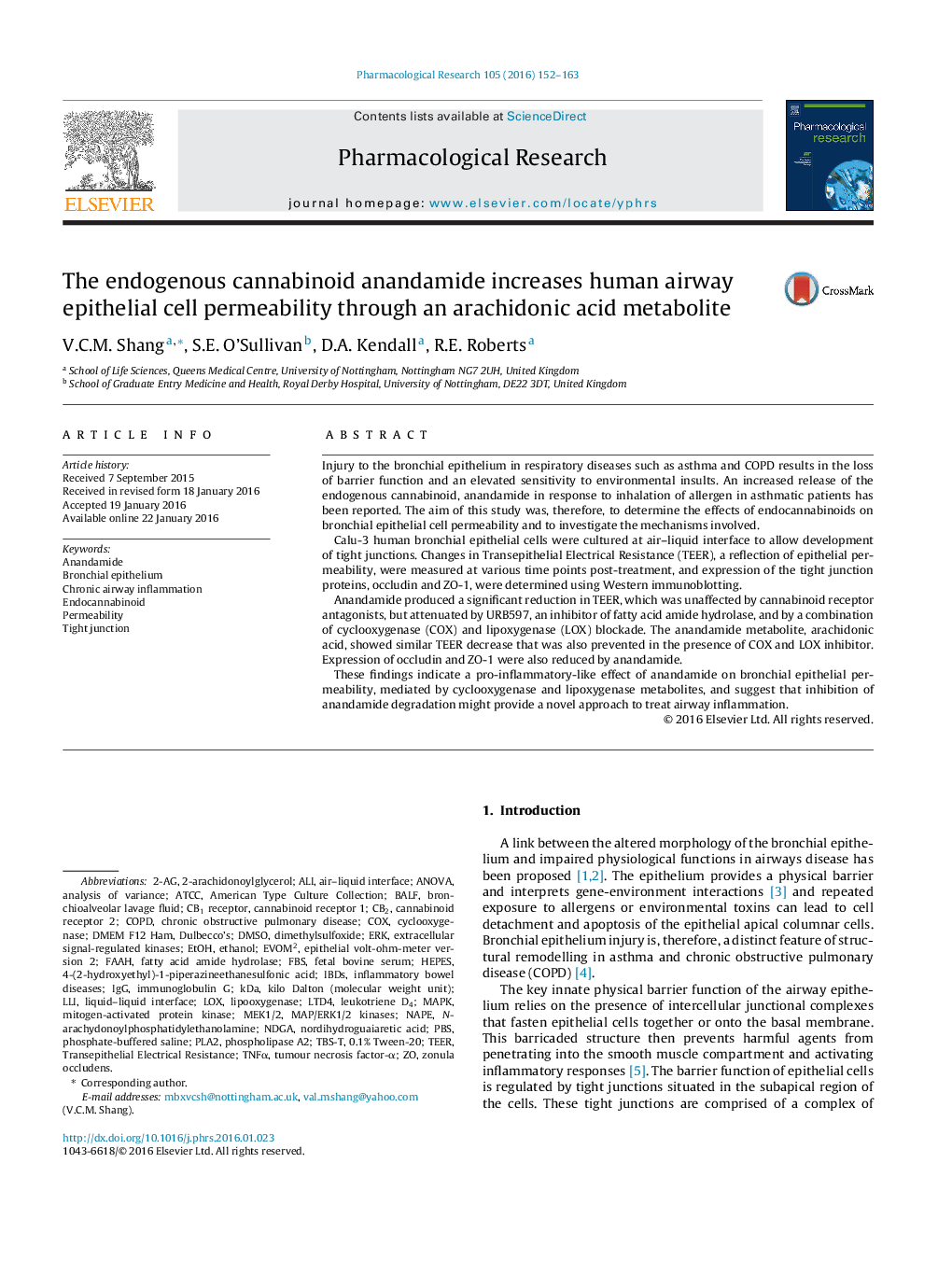| Article ID | Journal | Published Year | Pages | File Type |
|---|---|---|---|---|
| 2562050 | Pharmacological Research | 2016 | 12 Pages |
Injury to the bronchial epithelium in respiratory diseases such as asthma and COPD results in the loss of barrier function and an elevated sensitivity to environmental insults. An increased release of the endogenous cannabinoid, anandamide in response to inhalation of allergen in asthmatic patients has been reported. The aim of this study was, therefore, to determine the effects of endocannabinoids on bronchial epithelial cell permeability and to investigate the mechanisms involved.Calu-3 human bronchial epithelial cells were cultured at air–liquid interface to allow development of tight junctions. Changes in Transepithelial Electrical Resistance (TEER), a reflection of epithelial permeability, were measured at various time points post-treatment, and expression of the tight junction proteins, occludin and ZO-1, were determined using Western immunoblotting.Anandamide produced a significant reduction in TEER, which was unaffected by cannabinoid receptor antagonists, but attenuated by URB597, an inhibitor of fatty acid amide hydrolase, and by a combination of cyclooxygenase (COX) and lipoxygenase (LOX) blockade. The anandamide metabolite, arachidonic acid, showed similar TEER decrease that was also prevented in the presence of COX and LOX inhibitor. Expression of occludin and ZO-1 were also reduced by anandamide.These findings indicate a pro-inflammatory-like effect of anandamide on bronchial epithelial permeability, mediated by cyclooxygenase and lipoxygenase metabolites, and suggest that inhibition of anandamide degradation might provide a novel approach to treat airway inflammation.
Graphical abstractFigure optionsDownload full-size imageDownload high-quality image (165 K)Download as PowerPoint slide
